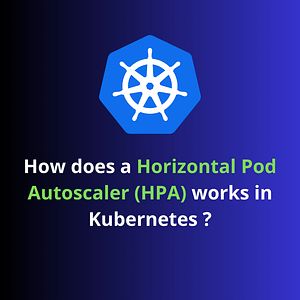Introduction
✴️ In Kubernetes, there are “probes” or health checks defined which continuously monitors the health of the pod. These probes helps to ensure the application running inside the Pod is healthy. In case, the probe fails for any reason, Kubernetes can mark the pod unhealthy or take any other custom action defined.
✴️ In this post, we will learn about three types of Kubernetes Probes (health checks):
✅ Liveness Probe
✅ Readiness Probe
✅ Startup Probe
✴️ Kubernetes Probes are used to detect:
👉 Containers that haven’t started yet and can’t serve traffic.
👉 Containers that are overwhelmed and can’t serve additional traffic.
👉 Containers that are completely dead and not serving any traffic.
Three types of Kubernetes Probes
1️⃣ Liveness Probe
👉 It indicates whether the container is running inside a pod
👉 If the liveness probe fails, the kubelet kills the container, and the container is subjected to its restart policy.
👉 If a container does not provide a liveness probe, the default state is Success.
👉 If app is healthy, Kubernetes will not interfere with pod functioning. If app is unhealthy, Pod will be marked as unhealthy. If a Pod fails health-checks continuously, the Kubernetes terminates the pod and starts a new one.
2️⃣ Readiness Probe
👉 It indicates whether the container is ready to respond to requests.
👉 Readiness probes let Kubernetes know when your app (running in a container inside Pod) is ready to serve traffic.
👉 If the readiness probe fails, the endpoints controller removes the Pod’s IP address from the endpoints of all Services that match the Pod.
👉 Unlike a liveness probe, a readiness probe doesn’t kill the container. If the readiness probe fails, Kubernetes simply hides the container’s Pod from corresponding Services, so that no traffic is redirected to it.
👉 A side-effect of using Readiness Probes is that they can increase the time it takes to update Deployments.
3️⃣ Startup Probe
👉 It indicates whether the application within the container is started.
👉 Startup probe has higher priority over the two other probe types. All other probes are disabled if a startup probe is provided, until it succeeds.
👉 If the startup probe fails, the kubelet kills the container, and the container is subjected to its restart policy.
👉Startup probes are useful in situations where your app can take a long time to start, or could occasionally fail on startup.
References
🔗 Types of Probes (K8s official documentation)
🔗 Kubernetes probes overview
🔗 Kubernetes Liveness Probes
🔗 Kubernetes Readiness Probes




